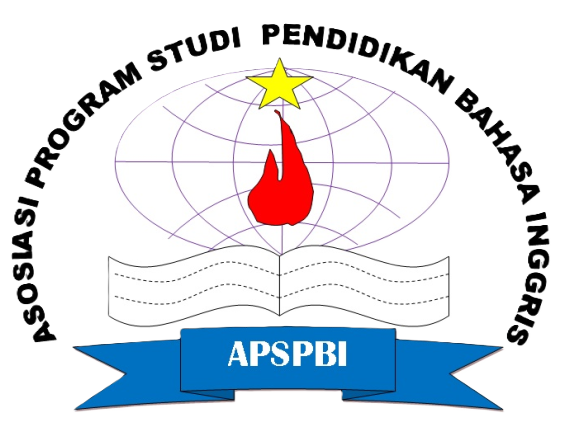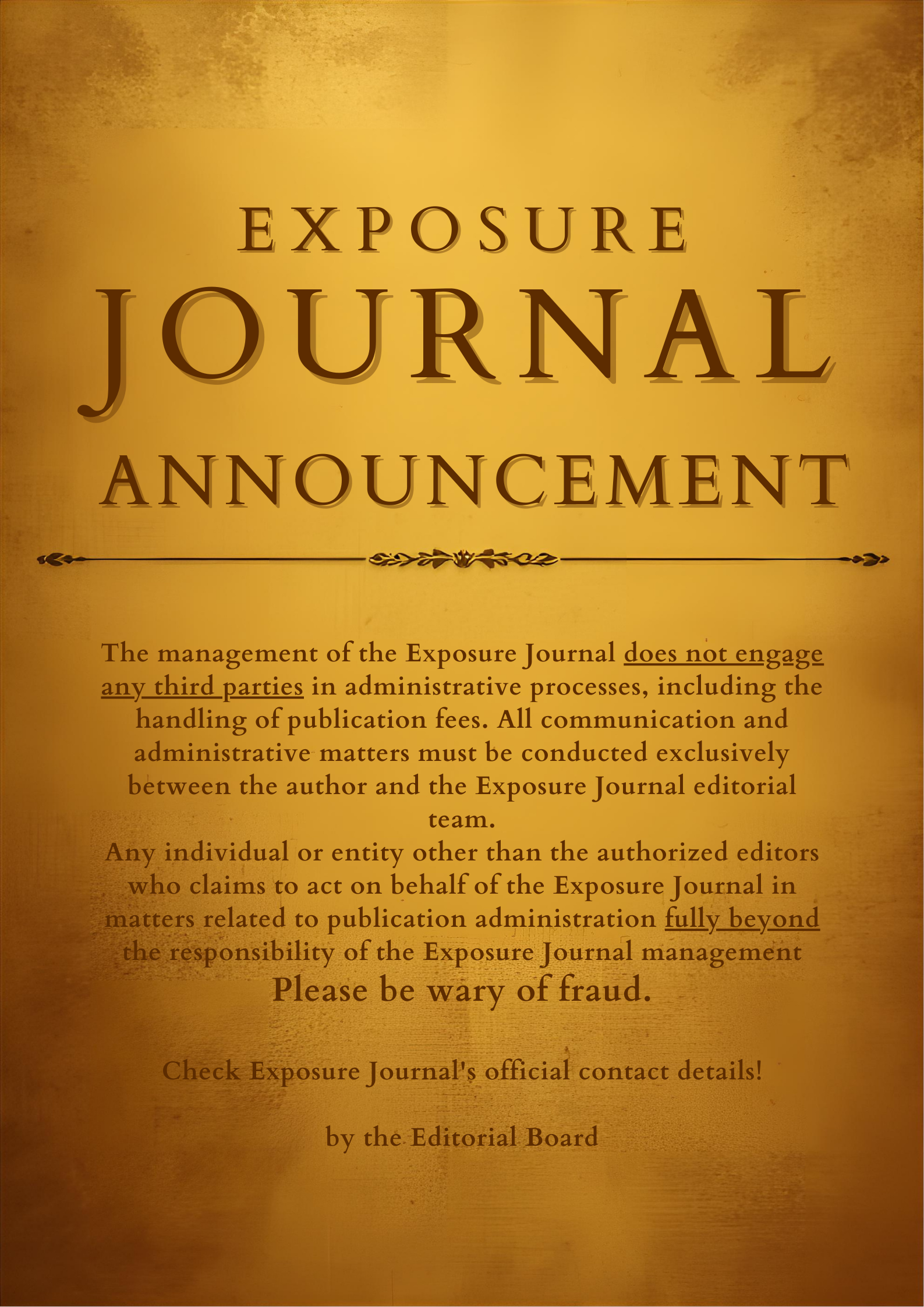THE CORRELATION BETWEEN STUDENTS’ LEARNING STYLES AND STUDENTS’ ACHIEVEMENT IN LISTENING AND SPEAKING SKILLS
DOI: https://doi.org/10.26618/exposure.v13i1.12784
Listening and speaking for general communication, Correlation, Students Achievement.
Abstract
The purpose of this study is to investigate the learning style tendencies exhibited by students in their pursuit of listening and speaking skills for general communication at UKI Toraja, as well as to examine the correlation between these learning style tendencies and their achievement in speaking and listening skills. This research employed a quantitative descriptive approach, with a sample size of 35 students, analyzed using SPSS 26. The results of the questionnaire indicated a very strong correlation, ranging from 0.80 to 1.000. It revealed that students possessed three distinct learning styles when acquiring listening and speaking skills for general communication: visual, auditory, and kinesthetic. Each of these learning styles exhibited a highly significant correlation with students' achievements. Specifically, the correlation between the visual learning style and student achievement was 0.932, signifying a very strong relationship. The audio learning style exhibited a correlation of 0.885 with student learning achievement, also indicating a very strong connection. Lastly, the kinesthetic learning style displayed a correlation of 0.930 with student achievement, further underscoring a very strong relationship. These findings demonstrate that each learning style (visual, auditory, kinesthetic) is significantly correlated with student achievement. Therefore, it can be concluded that H1 is accepted, as each learning style exhibits a strong correlation with students' achievement in listening and speaking skills
References
Adebileje, A., & Akinola, A. (2020). Teaching and learning english as a second language in nigeria: Examining evolving approaches and methods. Theory and Practice in Language Studies, 10(9). https://doi.org/10.17507/tpls.1009.02
Choudhury, A. S. (2013). Speaking, writing, and developing writing skills in English. Language in India, 13(9).
Fox, S., Kotelba, A., Marstio, I., & Montonen, J. (2020). Aligning human psychomotor characteristics with robots, exoskeletons and augmented reality. Robotics and Computer-Integrated Manufacturing, 63. https://doi.org/10.1016/j.rcim.2019.101922
Hamid, T. M. H. T. A., & Idrus, F. (2021). A Correlational Study of the English Listening and Speaking Anxiety in Rural Areas. English Language Teaching, 14(2). https://doi.org/10.5539/elt.v14n2p9
Han, J., & Lu, Q. (2017). A Correlation Study among Achievement Motivation, Goal-Setting and L2 Learning Strategy in EFL Context. English Language Teaching, 11(2). https://doi.org/10.5539/elt.v11n2p5
Heryanto, G., & Rahayu, S. (2021). THE INFLUENCE OF POWTOON MEDIA IN TEACHING LISTENING. PROJECT (Professional Journal of English Education), 4(1). https://doi.org/10.22460/project.v4i1.p86-90
Indefrey, P., Brown, C. M., Hellwig, F., Amunts, K., Herzog, H., Seitz, R. J., & Hagoort, P. (2001). A neural correlate of syntactic encoding during speech production. Proceedings of the National Academy of Sciences of the United States of America, 98(10). https://doi.org/10.1073/pnas.101118098
Kim, H. K., Biggs, S. J., Schloerb, D. W., Carmena, J. M., Lebedev, M. A., Nicolelis, M. A. L., & Srinivasan, M. A. (2006). Continuous shared control for stabilizing reaching and grasping with brain-machine interfaces. IEEE Transactions on Biomedical Engineering, 53(6). https://doi.org/10.1109/TBME.2006.870235
Kuttattu, A. S., Gokul, G. S., Prasad, H., Murali, J., & Nair, L. S. (2019). Analysing the learning style of an individual and suggesting field of study using Machine Learning techniques. Proceedings of the 4th International Conference on Communication and Electronics Systems, ICCES 2019. https://doi.org/10.1109/ICCES45898.2019.9002051
Melvina, M., & Julia, J. (2021). Learner autonomy and English proficiency of Indonesian undergraduate students. Cypriot Journal of Educational Sciences, 16(2). https://doi.org/10.18844/CJES.V16I2.5677
Rahman, F., Ozair, A., Khan, S. R., & Sonkar, A. A. (2023). Correlation. In Handbook for Designing and Conducting Clinical and Translational Surgery. https://doi.org/10.1016/B978-0-323-90300-4.00035-5
Rayanto, Y. H., & Daryono. (2022). Investigating Student’s Learning Style in Learning Activity during Blended Learning Class. International Journal Of Humanities Education and Social Sciences (IJHESS), 2(2). https://doi.org/10.55227/ijhess.v2i2.263
Setiawan, H., Isnaeni, W., Budijantoro, F. P. M. H., & Marianti, A. (2015). Implementation of digital learning using interactive multimedia in excretory system with virtual laboratory. Research and Evaluation in Education, 1(2). https://doi.org/10.21831/reid.v1i2.6501
Wu, G., & Li, F. (2021). A randomized exponential canonical correlation analysis method for data analysis and dimensionality reduction. Applied Numerical Mathematics, 164. https://doi.org/10.1016/j.apnum.2020.09.013
Xu, Y. (2019). English Language Teacher Assessment Literacy in Practice. https://doi.org/10.1007/978-3-319-58542-0_22-1
Downloads
Published
How to Cite
Issue
Section
License
Authors who publish with this journal agree to the following terms:
In order to assure the highest standards for published articles, a peer review policy is applied. In pursue of the compliance with academic standards, all parties involved in the publishing process (the authors, the editors and the editorial board and the reviewers) agree to meet the responsibilities stated below in accordance to the Journal publication ethics and malpractice statement.
Duties of Authors:
- The author(s) warrant that the submitted article is an original work, which has not been previously published, and that they have obtained an agreement from any co-author(s) prior to the manuscript’s submission;
- The author(s) should not submit articles describing essentially the same research to more than one journal;
- The authors(s) make certain that the manuscript meets the terms of the Manuscript Submission Guideline regarding appropriate academic citation and that no copyright infringement occurs;
- The authors(s) should inform the editors about any conflict of interests and report any errors they subsequently, discover in their manuscript.
Duties of Editors and the Editorial Board:
- The editors, together with the editorial board, are responsible for deciding upon the publication or rejection of the submitted manuscripts based only on their originality, significance, and relevance to the domains of the journal;
- The editors evaluate the manuscripts compliance with academic criteria, the domains of the journal and the guidelines;
- The editors must at all times respect the confidentiality of any information pertaining to the submitted manuscripts;
- The editors assign the review of each manuscript to two reviewers chosen according to their domains of expertise. The editors must take into account any conflict of interest reported by the authors and the reviewers.
- The editors must ensure that the comments and recommendations of the reviewers are sent to the author(s) in due time and that the manuscripts are returned to the editors, who take the final decision to publish them or not.
Authors are permitted and encouraged to post online a pre-publication manuscript (but not the Publisher’s final formatted PDF version of the Work) in institutional repositories or on their Websites prior to and during the submission process, as it can lead to productive exchanges, as well as earlier and greater citation of published work (see The Effect of Open Access). Any such posting made before acceptance and publication of the Work shall be updated upon publication to include a reference to the Publisher-assigned DOI (Digital Object Identifier) and a link to the online abstract for the final published Work in the Journal.














